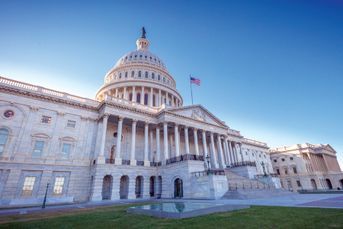How 401(k) deductions were saved in budget drama
Diverse efforts and a tweet from Trump came together for rescue
Fears of drastic changes to retirement savings tax advantages during the recent tax reform deal failed to materialize, thanks to the efforts of an unusual coalition, old-fashioned lobbying and a presidential tweet.
The allure of reducing the tax preferences for pretax retirement savings plans to raise federal revenue is nothing new. Ideas have been floated by Republicans and Democrats alike whenever money is needed to pay for tax cuts, federal spending and debt demands, and other fiscal crises.
But for many Washington observers, those tax advantages came closer than ever to real peril in 2017, which saw the biggest push for tax reform in more than 30 years along with the biggest price tag: more than $1.5 trillion in tax cuts and projected lost revenue that had to be offset.
Panic started to spread among retirement plan executives and service providers when White House and Republican tax negotiators in Congress refused to rule out the idea of “Rothification,” a dramatic shift to post-tax Roth accounts from pre-tax savings preferences for traditional 401(k) accounts.
As tax-negotiating committees started to work on legislation, other ideas cropped up. One cause for alarm was a Senate proposal to prohibit individuals earning $500,000 or more annually from making catch-up contributions. That sparked memories of proposals from Barack Obama’s administration to means-test retirement plans and impose lower contribution caps to shift the benefit more toward the middle class.
Another rumored change was capping pre-tax contribution levels to as little as $2,400, down from current annual caps of $18,000, or $24,000 for those older than 50. That idea, said one lobbyist who asked not to be identified, “was a tactical decision that backfired” and instead galvanized opposition to any retirement-related changes.
The gravity of what was at stake led to formation of the Save Our Savings Coalition, a combination of former go-it-alone trade groups, financial services firms, plan sponsor organizations and even the AARP, represented — or more accurately, herded — by Groom Law Group, which started strategizing when President Donald Trump brought his tax-cut mantra to Washington.
First-time Coalition
“This is the first time we’ve banded together, and it was very successful,” said Brian Graff, CEO of the American Retirement Association in Arlington, Va., an umbrella organization for groups representing 25,000 pension professionals, actuaries, plan advisers and others. “There was a tremendous amount of lobbying, but it was also PR and grass roots,” Mr. Graff said.
Leaks from Democratic congressional staffers opposed to the Republican tax plan also helped to draw previously silent members of Congress into the fray.
As members of Congress were educated by coalition members about the potentially negative impact on retirement savings, “they came out when it became real. The coalition ran a pretty successful grass-roots and inside-the-Beltway campaign, and were able to educate members of Congress on both sides,” said Michael Kreps, a Groom principal and former Senate pension aide.
Media coverage of what was at stake for retirement savers led to direct involvement by President Trump with an Oct. 23 tweet: “There will be NO change to your 401(k). This has always been a great and popular middle-class tax break that works, and it stays!” That tweet, said many on the front lines, made a tremendous difference by shutting off debate within the administration and Congress.
When it became apparent that many middle-class retirement savers would be hurt by the changes, “it became too perilous to pursue,” said Geoff Manville, principal, government relations at Mercer LLC in Washington. “I think Congress properly realized that a major restructuring of the system is a gamble we cannot afford to take, especially when we are dealing with retirement security.”
It also helped that other revenue-raisers were found, such as trimming state and local tax deductions and cutting the Affordable Care Act health insurance mandate, “but I’d like to believe that they backed off for policy reasons first and foremost,” said Mr. Manville.
In the end, said Derek Dorn, managing director and head of regulatory engagement and policy for TIAA-CREF in New York and a former Senate aide, “there was an appreciation (by members of Congress) that the revenue savings were specious and the policy case particularly weak.”
Coalition members are taking a well-earned break, but promise to remain vigilant. “There will continue to be pressure,” said Mr. Manville. “Once a revenue-raiser is introduced, it never goes away. It’s on the shelf.”
Hazel Bradford is a reporter for InvestmentNews‘ sister publication Pensions & Investments.
Learn more about reprints and licensing for this article.






